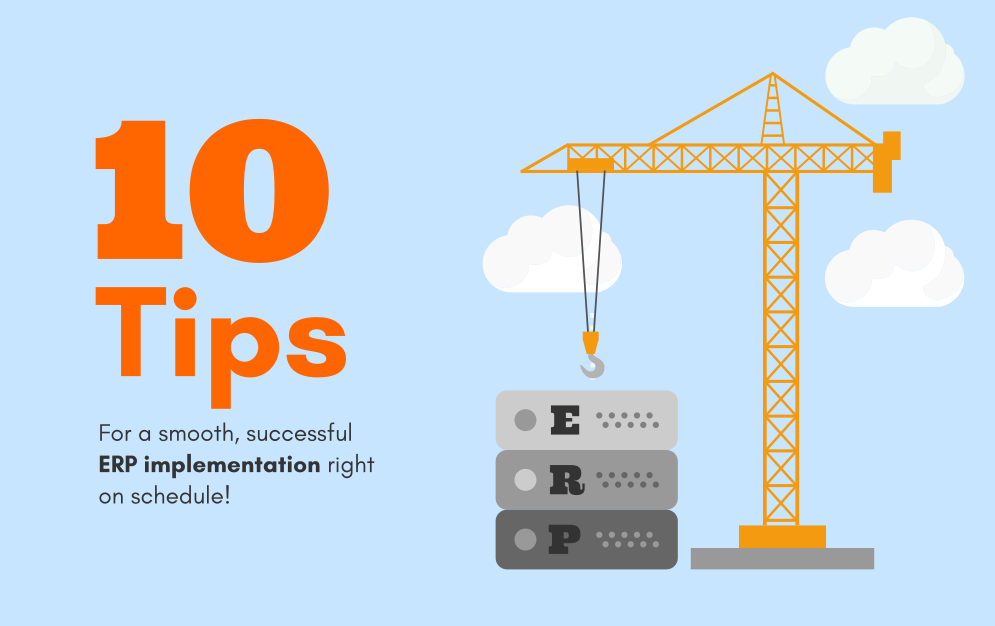If your company's using an outdated, legacy system or a tedious hodgepodge of Excel spreadsheets and accounting software, you might think most employees would embrace the thought of a new Enterprise Resource Planning (ERP) systems implementation with open arms.
Just think about it: the average professional learns how to use at least one new software application or electronic gadget each year.
So if you're pitching the idea of investing in a new ERP system, you can expect everyone to hop on board, right?
If only it were that easy.
To ensure a successful ERP system implementation, you need to get buy-in across your organisation – and not just buy-in from your executive management.
Need More Advice? Head to The 10 Must-Know Tips for a Successful ERP Systems Implementation Article Here
While executives typically have the final say in an ERP software implementation, you need to ensure your middle management and employees support your ERP project; often it’s not enough to have buy-in at just one level, you must garner support at all three levels in your company for your ERP project to proceed smoothly.
Without the right support, your ERP systems project will either stall, or won’t receive the consideration, budget, or time it deserves even if it is approved — which will reduce your success rates even before your ERP software implementation has a chance to take off.
Here’s how to get each type of buy-in you require for success.
1. Executive And Core Leadership Buy-In

Capturing buy-in from executives and core leadership is all about highlighting new efficiencies and what reduced redundancies integration will deliver.
It all starts with one person who understands that while upfront investment is required, the positive impact on the bottom line is well worth the investment.
Whoever's tasked with getting the executive and leadership team on board (either an executive or a project manager) must sit with the team and discuss the most pressing areas of opportunity and how a new ERP system can help.
This should include external customers/stakeholders and how the upcoming changes will be of benefit on their end as well.
They must be able to share a measurable vision for how the current situation will be improved.
Focus on factors such as:
- Current key performance indicators and how integration can be utilised to optimise results.
- Current return on investment and the potential room for improvement once integration is complete.
- How current business processes will be simplified, automated, or replaced—and what this will achieve in measurable terms.
- How current bottlenecks, roadblocks, and employee and client frustrations will be eliminated, automated, or minimised.
- How the customer journey and experience will be improved.
Getting buy-in here is perhaps the most crucial step to take before proceeding to convince operational-level employees. After all, stakeholders and executives hold the decision-making power when it comes to large investments like an ERP system.
2. Getting The Management Team To Buy In

If both executives and management are not part of the planning process, the data and direction required to deliver a truly meaningful implementation won’t be achieved.
So once the general ERP system go-ahead has been given, at least one or two executives need to be the touch point to generate buy-in from the mid-management team.
This should happen shortly after the decision to move forward has been made, but before actual ERP planning begins.
Begin by highlighting the same projected areas of opportunities presented to the core leadership team that the new system will deliver in terms of KPIs and ROIs, but focus more on how the new system will streamline and simplify the current business processes for these mid-level managers.
Get at least a few mid-level managers in on the ERP software planning process. Their input will be invaluable in terms of sharing first hand feedback, both at the managerial level and at the ground level with feedback from members of their team.
In turn, this will optimise and personalise the ERP system in meaningful and measurable ways for the users.
In addition to looping the mid-management team in, identify one or two early adopters —management team members who comprehend the value of a new ERP system, and are excited about a successful implementation.
Assign these early adopters to announce updates, answer questions, and build buzz throughout your organization. Their genuine passion and enthusiasm will help other managers and employees get excited too — or if not excited, to open their mind to new possibilities.
If anyone in the executive or management teams specialises in change management, have them work with the project management and ERP teams to strategically implement this exciting new change.
3. Getting Employee Buy-In

Once your overall plan is in place and specific benefits have been identified, the management team can start building buzz with the employees.
The truth is, it will take time to get everyone onboard.
Your operational-level staff are busy, and learning how to use ERP software is just one more thing on their to-do lists.
Even if they see room for improvement, chances are they're comfortable with the current business systems. It’s for these reasons that you must share the benefits from an employee’s standpoint.
A mistake many enterprises make is to announce their plans just shortly before launch and training. Instead, the management team needs to make an early announcement — then start weaving the benefits of their chosen ERP system into conversations from there on out.
A good approach would be to use day-to-day operational problems, and explain how the new ERP system will streamline, automate, eliminate, or minimise these concerns.
For example, you could say, “I understand your frustration with having to change the way you work, but once the new ERP software is implemented this issue you face every day will no longer exist”.
If possible, provide a department-by-department list of time-saving and operational benefits, and strategically share this with your team.
Spread training out in a reasonable time-frame and have a system in place for those who require additional training. Also, be strategic in how to roll out the new system.
For example, will the entire team upgrade on the same day or in phases? Will there be a dip in productivity for the first few weeks? If so, plan accordingly.
Need More Information On ERP Software?
A new ERP software implementation will be a bit more challenging for everyone involved to grasp. While your colleagues and executives understand efficiencies produced by technology, it may be difficult to visualise the full benefits of having a new ERP software prior to its implementation.
For more advice on ERP software, contact us here and one of our ERP consultants will get back to you shortly. Or you can check out the free Ultimate ERP System Guide for SMEs below for an in-depth look at commonly asked ERP questions.




